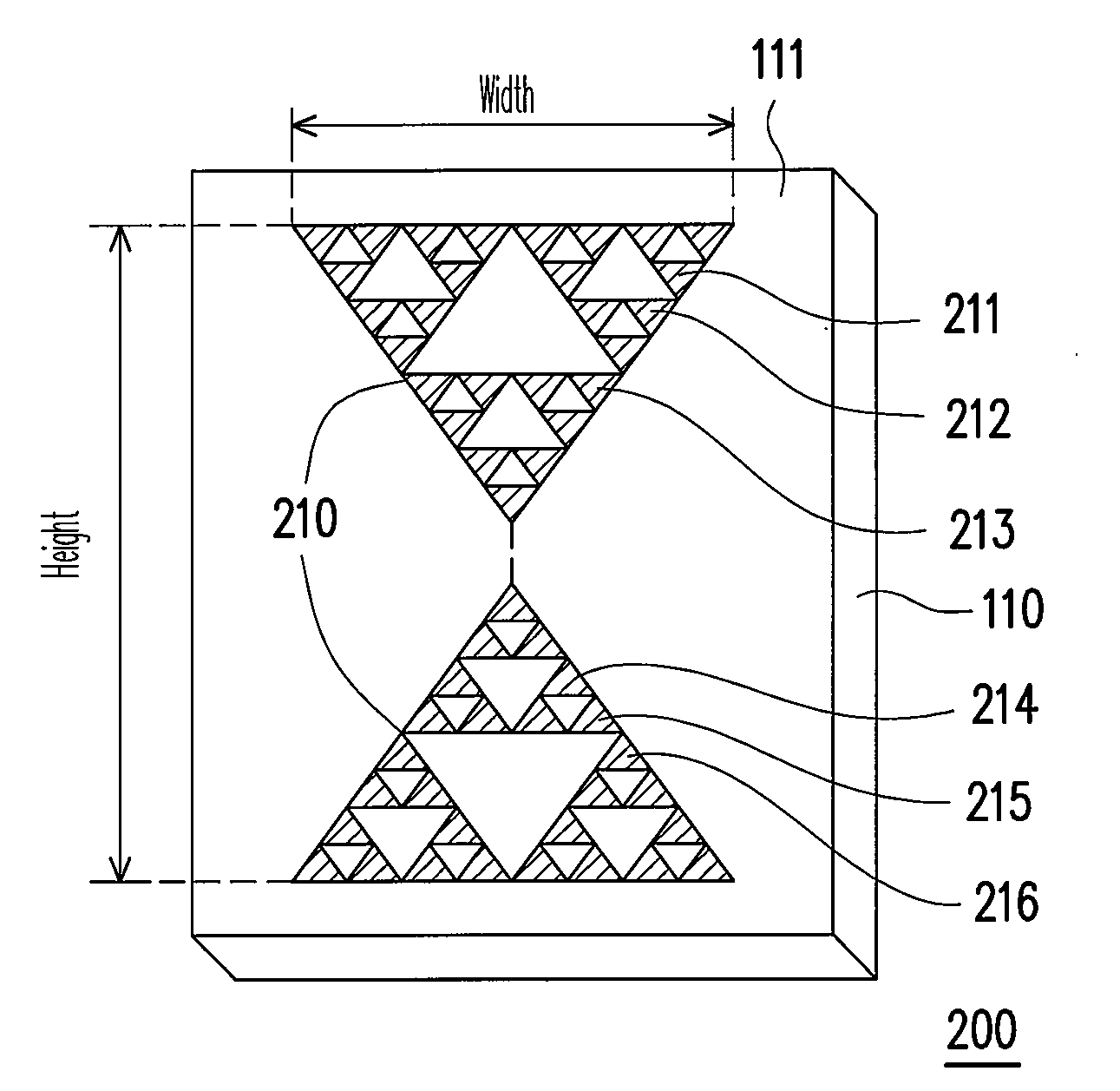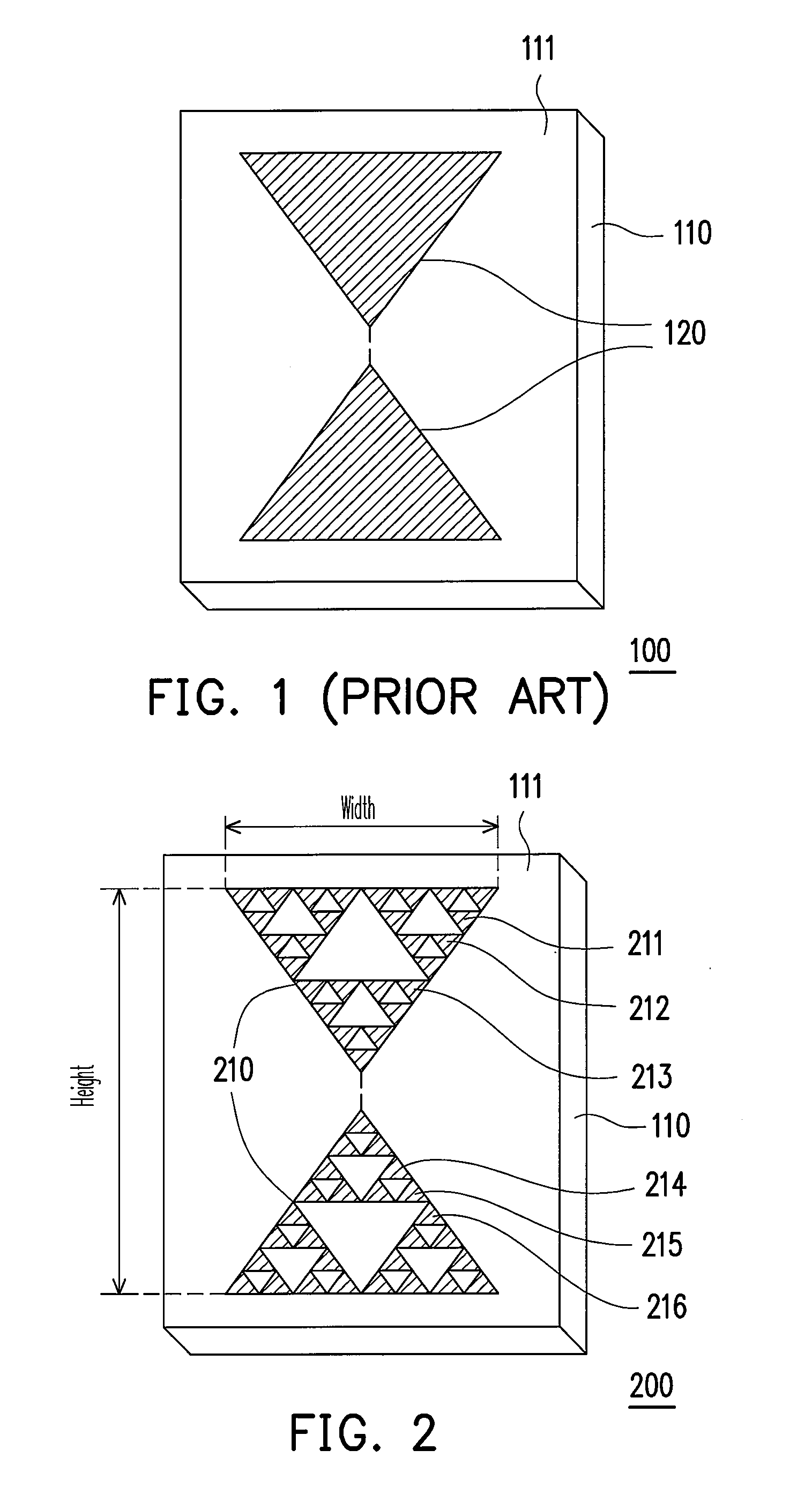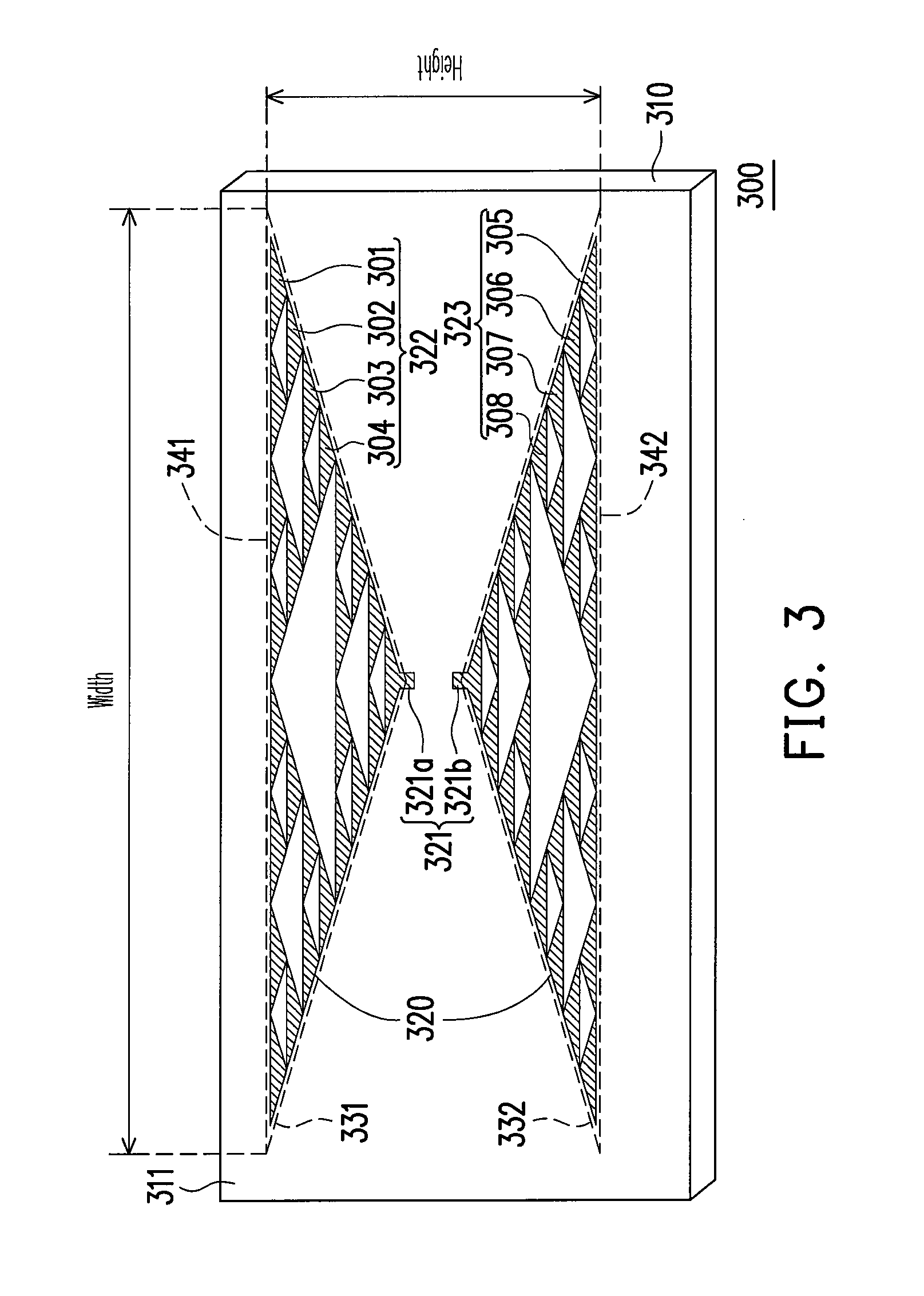Planar antenna for radio frequency identification tag
a radio frequency identification and planar antenna technology, applied in the direction of antennas, antenna details, antenna feed intermediates, etc., can solve the problems of limited identification distance, inability to achieve miniaturization, and inability to have a good conjugate match of innovative planar antennas b>200/b> with tag chips, etc., to achieve good conjugate match and optimize design
- Summary
- Abstract
- Description
- Claims
- Application Information
AI Technical Summary
Benefits of technology
Problems solved by technology
Method used
Image
Examples
Embodiment Construction
[0023]In order to achieve the miniaturization and conjugate match required by the planar antenna for an RFID tag, the present invention acquires the optimal size of the fractal dipole antenna through many times of designs and experiments. Compared to the innovative planar antennae, the planar antenna of the present invention not only has a miniature appearance, but also effectively improves the identification distance of the RFID system. The planar antenna of the present invention will be described below. However, the description is not intended to limit the present invention. Those skilled in the art can make appropriate modifications to the following embodiments without departing from the spirit of the present invention, and the modifications still fall in the scope of the present invention.
[0024]FIG. 3 is a schematic structural view of a planar antenna for an RFID tag according to an embodiment of the present invention. The planar antenna 300 of the present embodiment comprises a...
PUM
 Login to View More
Login to View More Abstract
Description
Claims
Application Information
 Login to View More
Login to View More - R&D
- Intellectual Property
- Life Sciences
- Materials
- Tech Scout
- Unparalleled Data Quality
- Higher Quality Content
- 60% Fewer Hallucinations
Browse by: Latest US Patents, China's latest patents, Technical Efficacy Thesaurus, Application Domain, Technology Topic, Popular Technical Reports.
© 2025 PatSnap. All rights reserved.Legal|Privacy policy|Modern Slavery Act Transparency Statement|Sitemap|About US| Contact US: help@patsnap.com



